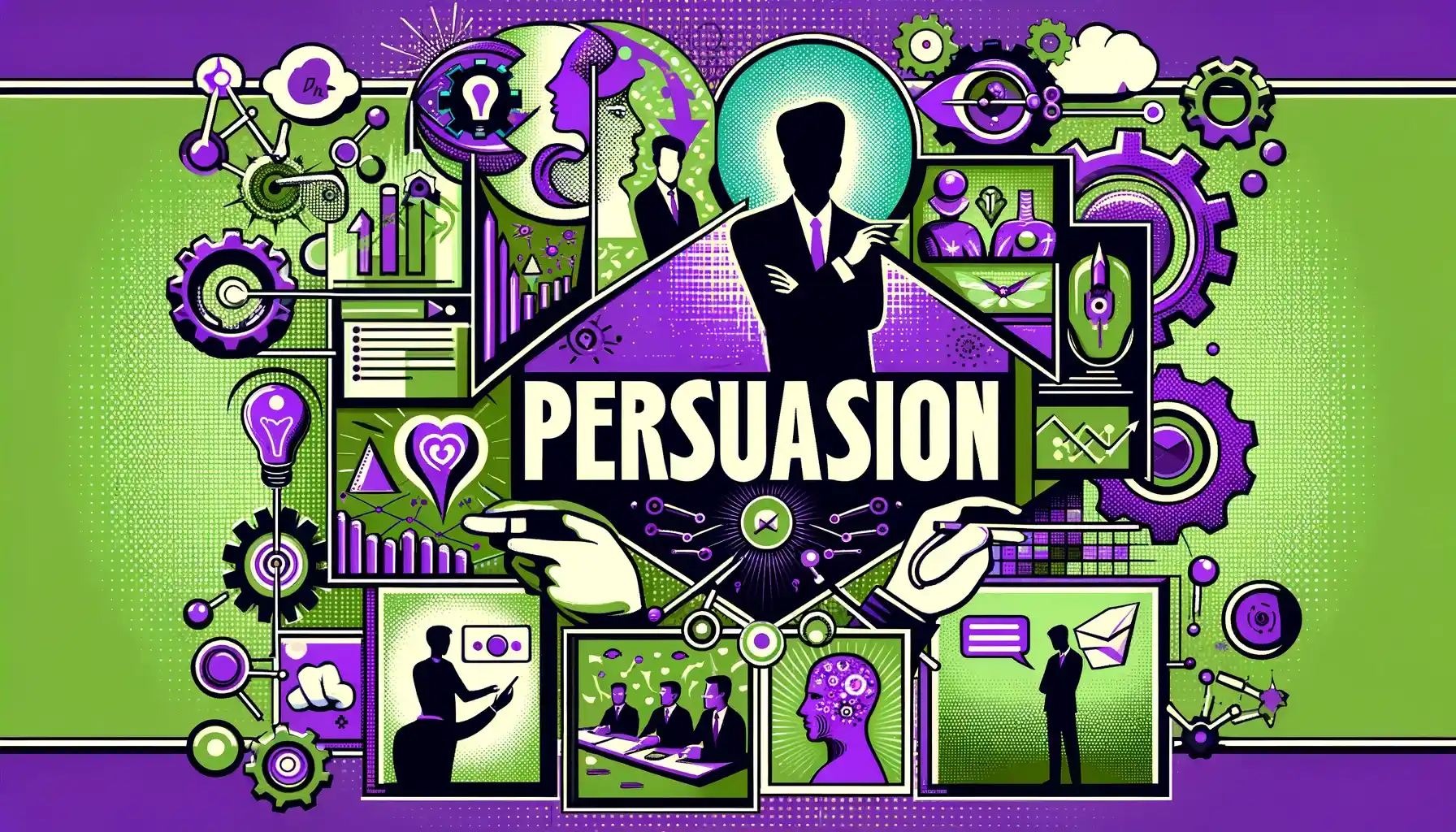The Power of Persuasive Influence
<div>Have you ever wondered how some people seem to have a knack for convincing others? That's the power of <a href='https://www.skillsyouneed.com/ips/persuasion-skills.html' class='no-underline text-accent'>persuasive influence</a>. It's a communication skill that can be used to convince others to buy merchandise, change their minds, or alter their actions.<br/><br/>Persuasive influence is not about manipulation or coercion. It's about understanding the needs and desires of others, and presenting your ideas in a way that appeals to those needs and desires. It's about building trust, establishing rapport, and creating a win-win situation for everyone involved.</div>The Art of Persuasion: From Basics to Advanced Techniques
<div>At its core, persuasive influence is about understanding human psychology. It's about knowing how to appeal to people's emotions, how to use logic and reason to support your arguments, and how to use the power of storytelling to make your ideas more compelling.<br/><br/>For beginners, it's important to start with the basics. This includes understanding the principles of <a href='https://www.verywellmind.com/what-is-persuasion-2795572' class='no-underline text-accent'>persuasion</a>, such as reciprocity, scarcity, authority, consistency, liking, and consensus. It also includes learning how to use body language, tone of voice, and other non-verbal cues to enhance your persuasive abilities.<br/><br/>For those who are more advanced, it's about honing your skills and learning how to use more sophisticated techniques. This includes understanding the power of <a href='https://www.psychologytoday.com/us/blog/communication-success/201810/12-most-powerful-persuasion-techniques' class='no-underline text-accent'>rhetorical devices</a>, such as metaphors, analogies, and rhetorical questions, to make your arguments more compelling. It also includes learning how to use the power of storytelling to make your ideas more memorable and persuasive.</div>Real-Life Examples of Persuasive Influence
<div>Let's take a look at a real-life example to illustrate the power of persuasive influence. Imagine you're a salesperson trying to convince a customer to buy a new car. You could simply list the features of the car, but that's unlikely to be very persuasive. Instead, you could use the principles of persuasion to make your pitch more compelling.<br/><br/>For example, you could use the principle of scarcity by highlighting that the car is in high demand and that there are only a few left in stock. You could use the principle of authority by citing expert reviews that praise the car's performance and reliability. And you could use the principle of liking by building rapport with the customer and showing genuine interest in their needs and desires.<br/><br/>By using these techniques, you're not just selling a car. You're creating a compelling narrative that appeals to the customer's emotions and desires, and that makes them more likely to buy.</div>Role-Playing Scenarios: The Do's and Don'ts of Persuasive Influence
<div><ul><li><i>You: 'This car is the best on the market. It has all the latest features and it's in high demand. You should buy it now before it's too late.'</i><br/><br/>Your colleague: 'That sounds like a hard sell. I'm not sure I'm convinced.'</li><br/><li><i>You: 'I understand your concerns. Let me tell you more about the car's features and why they might be beneficial for you. For example, it has a state-of-the-art safety system that could give you peace of mind when you're on the road. And it's been highly praised by experts for its performance and reliability.'</i><br/><br/>Your colleague: 'That sounds more convincing. I'll think about it.'</li></ul><br/>In the first scenario, the attempt to persuade is too aggressive and lacks empathy. In the second scenario, the approach is more persuasive because it's tailored to the needs and desires of the other person, and it uses the principles of persuasion effectively.</div>














